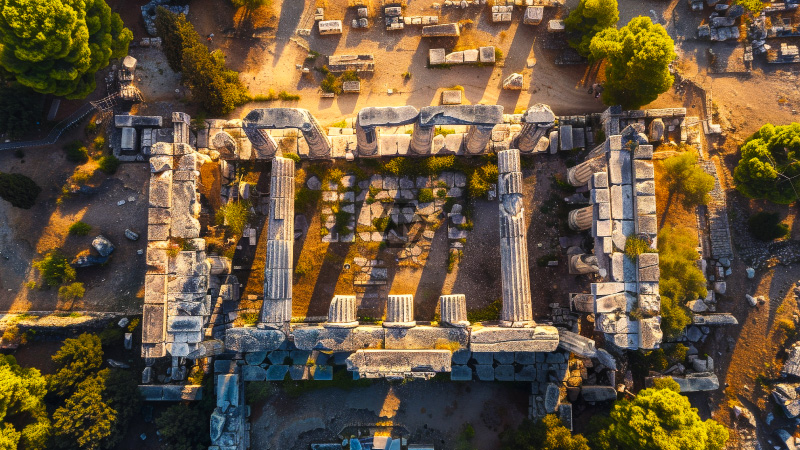- Archaeologists discover a 2,600-year-old temple complex in Selinunte, Sicily.
- The temple, built in the Doric style, features Greek mythological motifs.
- The site may have been dedicated to Apollo, the god of sun, light, and prophecy.
Selinunte, an ancient city on the island of Sicily, was once a bustling hub of the Greek world, home to 30,000 inhabitants.
Recent excavations have revealed a 2,600-year-old temple complex in the city’s southern quadrant, an area historically known for its religious significance.
Unveiling Sicily’s Ancient Past: Discovery of a 2,600-Year-Old Temple in Selinunte
The discovery, made within the peribolos wall of the Acropolis, suggests that the temple may have served as an archive, dedicated to Apollo, the god of sun, light, music, and prophecy. This finding adds a new layer to our understanding of Selinunte, a city that was abandoned during the First Punic War in 250 BC, leaving behind a rich archaeological legacy that continues to unfold.
The temple, built in the Doric style around the mid-sixth century BC, features intricate decorations drawn from Greek mythology, including the iconic figures of Medusa, Perseus, and Pegasus. These motifs not only reflect the artistic achievements of the time but also suggest that the temple played a crucial role in the religious and cultural life of the city.
Further excavations within the peribolos wall on the Acropolis have provided insights into the layout and boundaries of Selinunte’s religious center. The discovery of hundreds of ancient seals in the area supports the theory that the temple may have served as an archive, dedicated to Apollo, the revered Greek god associated with prophecy, music, and the sun.
This archaeological breakthrough offers a glimpse into the sophisticated urban planning and religious practices of ancient Selinunte. The city, once a thriving metropolis, was eventually abandoned during the First Punic War, leaving behind a treasure trove of historical artifacts that continue to captivate scholars and history enthusiasts alike.
The discovery of this ancient temple in Selinunte not only enriches our understanding of Greek culture in Sicily but also underscores the enduring legacy of the city’s architectural and religious heritage.
“Archaeology is not just about the past; it’s about understanding how we came to be where we are now.” — Sarah Parcak



